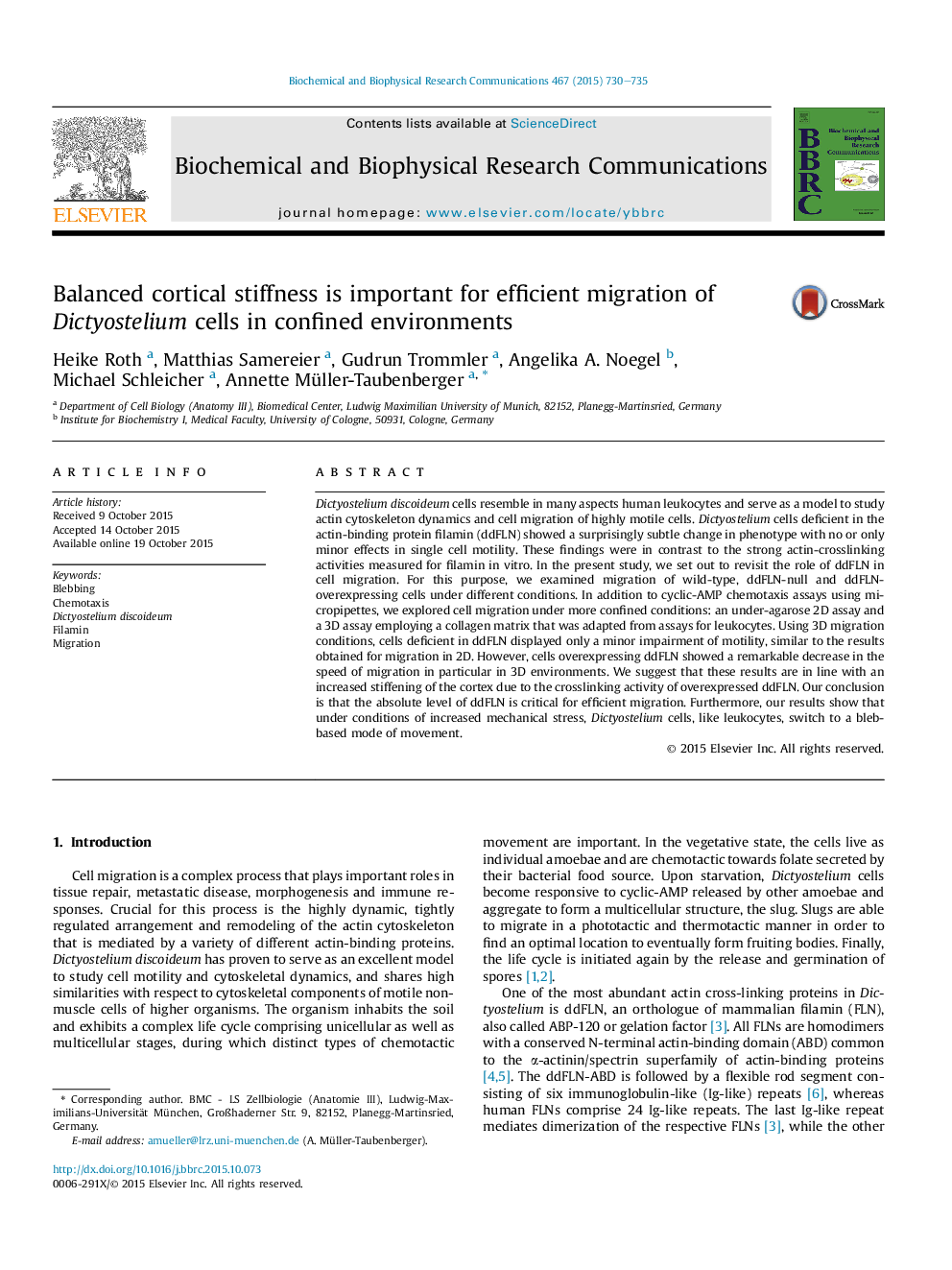| Article ID | Journal | Published Year | Pages | File Type |
|---|---|---|---|---|
| 10750589 | Biochemical and Biophysical Research Communications | 2015 | 6 Pages |
Abstract
Dictyostelium discoideum cells resemble in many aspects human leukocytes and serve as a model to study actin cytoskeleton dynamics and cell migration of highly motile cells. Dictyostelium cells deficient in the actin-binding protein filamin (ddFLN) showed a surprisingly subtle change in phenotype with no or only minor effects in single cell motility. These findings were in contrast to the strong actin-crosslinking activities measured for filamin in vitro. In the present study, we set out to revisit the role of ddFLN in cell migration. For this purpose, we examined migration of wild-type, ddFLN-null and ddFLN-overexpressing cells under different conditions. In addition to cyclic-AMP chemotaxis assays using micropipettes, we explored cell migration under more confined conditions: an under-agarose 2D assay and a 3D assay employing a collagen matrix that was adapted from assays for leukocytes. Using 3D migration conditions, cells deficient in ddFLN displayed only a minor impairment of motility, similar to the results obtained for migration in 2D. However, cells overexpressing ddFLN showed a remarkable decrease in the speed of migration in particular in 3D environments. We suggest that these results are in line with an increased stiffening of the cortex due to the crosslinking activity of overexpressed ddFLN. Our conclusion is that the absolute level of ddFLN is critical for efficient migration. Furthermore, our results show that under conditions of increased mechanical stress, Dictyostelium cells, like leukocytes, switch to a bleb-based mode of movement.
Related Topics
Life Sciences
Biochemistry, Genetics and Molecular Biology
Biochemistry
Authors
Heike Roth, Matthias Samereier, Gudrun Trommler, Angelika A. Noegel, Michael Schleicher, Annette Müller-Taubenberger,
